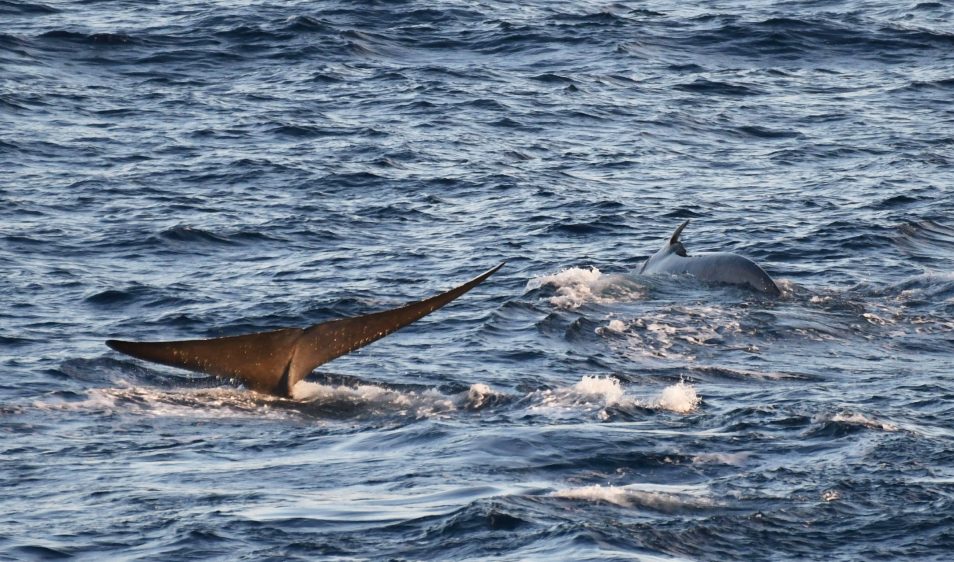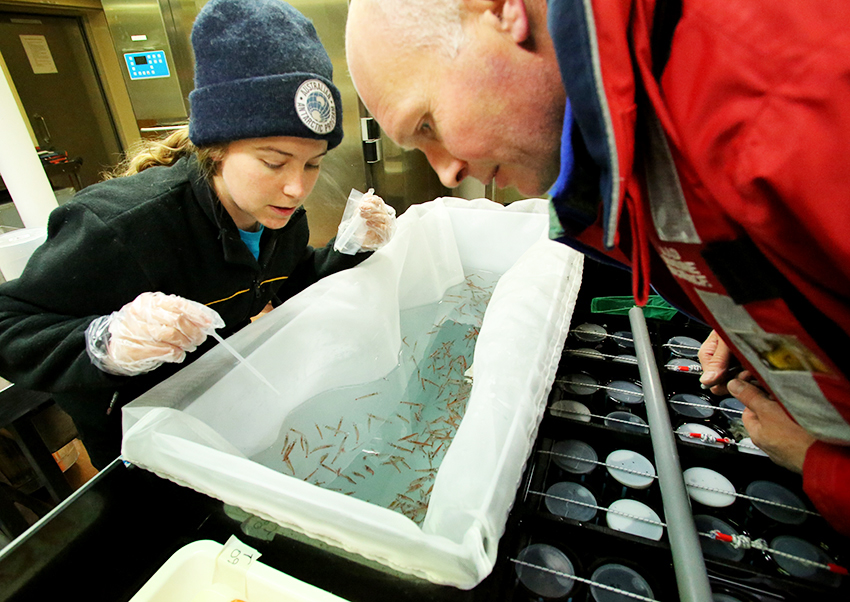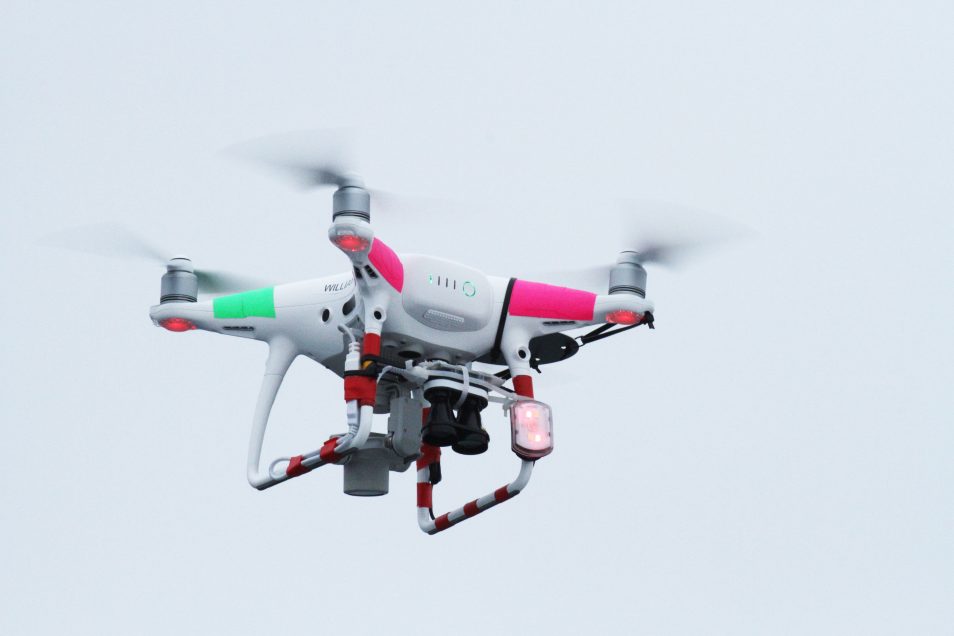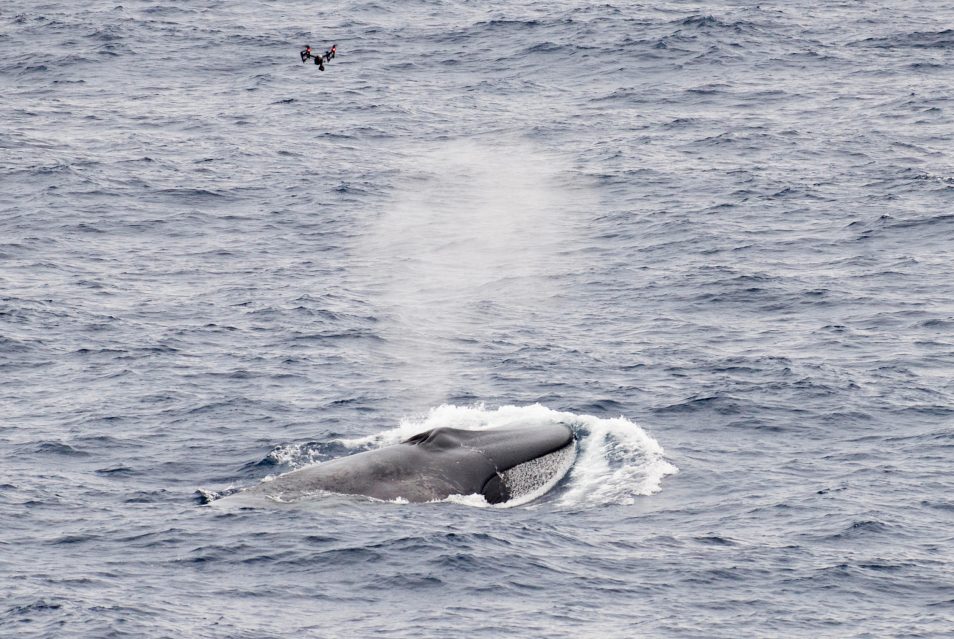
Researching these endangered Antarctic blue whales could improve future conservation efforts © Elanor Miller AAD
Can you imagine living life without your phone?
If you think about it, it was only about a decade ago when smartphones entered our lives, changing forever how we interact with each other and the world around us.
But mobile technology isn’t confined to our cities: it’s also helped scientists working in some of the most remote places on Earth. Like those on our RV Investigator, who have just returned to Hobart after a seven-week voyage across 200,000 square kilometres of the icy Southern Ocean.
Scientists from the Australian Antarctic Program were looking at the complex relationship between krill, whales, and their roles in maintaining the health of the Southern Ocean.
Krill ecologist with the Australian Antarctic Division, Dr So Kawaguchi, said this is the first time a survey of Antarctic blue whales has been conducted together with a structured survey of their prey, tiny crustaceans called Antarctic krill.
But how do you measure data in such a large area for two species in a short amount of time? This is where technology comes into the picture— a team of scientists have used innovative technology to uncover the distribution of endangered blue whales and krill.

The krill team in action © AAD
Listening in while they drone on
Antarctic blue whales may be big … but the Southern Ocean is bigger! The first challenge for the team of scientists on this epic 13,000 kilometre journey was to find the Antarctic blue whales in the vast waters of the Southern Ocean around Antarctica.
Lead whale acoustician, Dr Brian Miller, said that more than 250 underwater listening devices were deployed during the voyage. They were used to detect the low frequency calls of the whales.
“We monitored over 750 hours of underwater recordings and measured over 33,000 bearings to blue whale calls, which enabled us to home in on whale ‘hotspots’,” Dr Miller said.
Over 300 hours of whale watching led to 36 encounters with these magical creatures, leading to the identification of 25 individual whales. One was an old friend: the researchers spotted a whale which had been recorded on an expedition six years ago.

A sonobuoy is deployed to listen in to Antarctic blue whales © Peter Shanks CSIRO
For the first time on an Australian research vessel, echo sounders were used to construct three-dimensional pictures of giant krill swarms. Several swarms extended over one kilometre in length and hundreds of metres across, containing many millions of krill.
“We’ve now got so much more information about the fine-scale three-dimensional structure of krill swarms that we can start to get a better idea of the sort of swarms Antarctic blue whales hunt,” Dr Kawaguchi said.
“This opens a window into understanding the relationship between the world’s largest animal and one of the world’s most abundant organisms, Antarctic krill.”

A drone used in this research in flight © Paula Olson AAD
If listening to the whales and 3D mapping of krill wasn’t enough, drones were also used overhead to measure whale size, capture their “blow” (the air exhaled explosively from their blowholes), and sample trace metals in surface water.

A drone flies over a blue whale, capturing its “blow” © AAD
The technology used in this research has gathered data that will lead to the improvement of ecosystem-based management of Antarctic krill and conservation of endangered species such as Antarctic blue whales.
This research was supported by a grant of sea time on RV Investigator from the CSIRO Marine National Facility.


11th April 2019 at 6:45 pm
Glad the cruise was a success Brilliant!